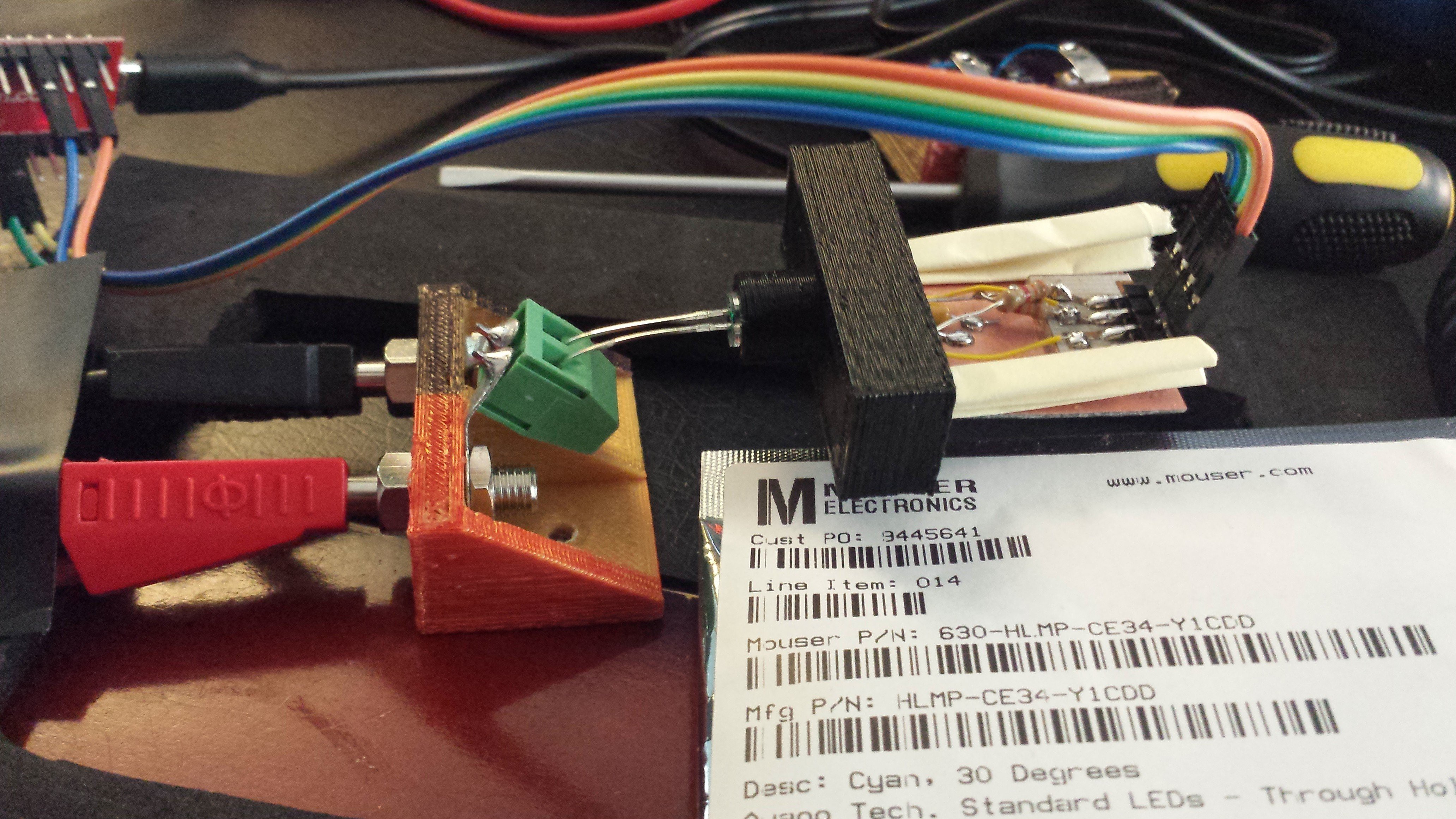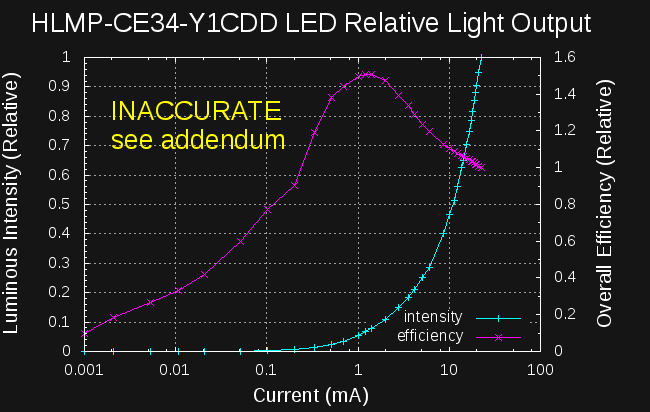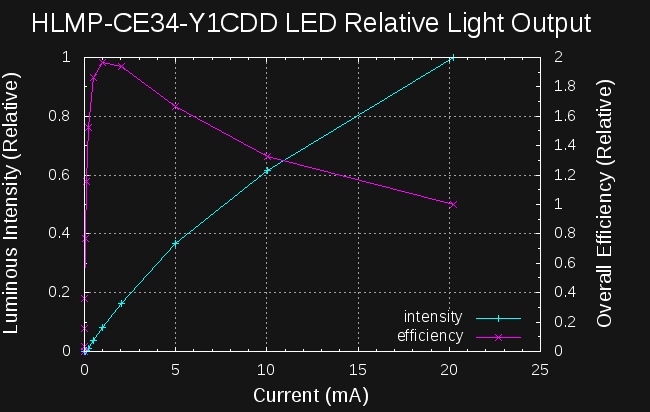UPDATE 8/11/16: I re-ran these measurements and obtained better data: see addendum.
By sheer luck, perhaps, I happen to have some very similar LEDs to those that Jaromir tested in his recent experiments. My version, the HLMP-CE34-Y1CDD, is listed on the same datasheet, and seems to differ mostly in having a 30-degree viewing angle vs the HLMP-CE14's 15-degree angle. This, of course, decreases the mcd rating, since the light is fanned out over a larger area. I believe the dies are identical, however, except for wavelength or output binning. This means that efficiency measurements should translate between the two parts, so I measured one of the eight I have.
I printed a simple coupler to hold the 5mm LED near the sensor, and collected data as I had done for the cyan Luxeon Z LED before:

Here's a linear-scale plot of the relative intensity and efficiency. The intensity curve looks pretty linear with current, although you can see a breakpoint in the slope around few mA. It also looks like the peak efficiency is down in the single-mA region:

To get a better look, I re-plotted on a logarithmic current scale:

The efficiency peak near 1mA (probably around 1.25mA looking at the raw data) really jumps out at you in this view. The relative efficiency at 1 mA is around 1.5, while at 10uA it's about 0.3 - the LED is 5x more efficient at 1mA than at 10uA!
I didn't push past 20mA with these measurements, but I don't expect that the curve jumps back up at higher currents.
Something didn't sit right, though. The intensity curve in the first plot looks almost linear with current - why is the efficiency curved like that? It's the Vf increasing with current:

That's enough to make the difference, since P = VI.
The datasheet has rough graphs of all these values except for relative efficiency. I was able to verify that there's a peak in the few-mA region by choosing a few points off the datasheet graphs and making a similar calculation.
So What?
If this is all true, and you want to get the same output as a 10uA DC-lit LED, you're best off using 1mA pulses at a duty cycle of 1/500. The LED will consume 1/5 the power for the same output. Even without a super-efficient driver circuit, you'll probably come out ahead.
Addendum (8/11/16)
The light meter boards for my automated measurement project came back. While testing them, I discovered a bug in my code that could screw up values when automatically setting the gain and integration times. I've re-run the experiments, and obtained this data:


The efficiency peak remains around 1mA, but the output droop at high currents is much more visible in the first (linear) plot.
 Ted Yapo
Ted Yapo
Discussions
Become a Hackaday.io Member
Create an account to leave a comment. Already have an account? Log In.